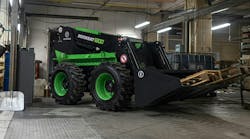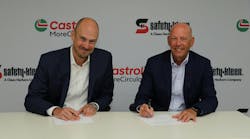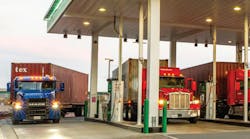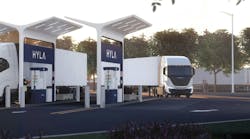With diesel engines lasting as long as 25 years, clean-air officials in states with the worst air are pushing to retire or upgrade older machines in order to make breathing safe for everyone. California's Air Resources Board (ARB) created a rule this summer, which environmental regulators in major metro areas throughout the United States are studying closely, that forces emissions criteria into equipment owners' repair-and-replacement decisions.
"We're not fighting the new ARB regulations; we're moving forward with the times. But the proposed regulations certainly accelerated our plans," said Lloyd Smith, senior vice president of Skanska USA Civil, after the company liquidated several million dollars worth of machines at a Ritchie Bros auction in Los Angeles last May. "We need to be updating our fleet with newer equipment and selling some of the older equipment in preparation for the regulations that are coming."
The Federal Clean Air Act describes the goal: Clean the air to protect the health of everyone, including those with weak respiratory systems such as the elderly, asthmatic, and infants. The nation's Environmental Protection Agency (EPA) sets air-quality standards limiting many pollutants to reach the goal. Particulate matter (PM) and ground-level ozone are most pertinent to diesel engine emissions. Ozone is formed when nitrogen oxides (NOx) combine with volatile organic compounds in sunlight. EPA determines compliance by sampling and analyzing air in an environment.
The PM and NOx limits EPA imposed on new diesel engines are different — strategies measured at engines' exhaust stacks intended to reach clean-air goals. EPA hasn't challenged existing fleets, but the federal agency's air-quality goals give the state agency — ARB — incentive to regulate the dirtiest diesels out of California.
The ARB rule, passed in July, affects an estimated 180,000 off-road vehicles used in construction, mining and other industries. It is intended to reduce emissions by a combination of measures, including retrofitting diesel particulate filters and encouraging the replacement of old engines with newer emission-controlled models. By 2020, diesel PM emissions from machines working in California will be reduced by 74 percent and NOx by 32 percent, compared to unregulated emissions.
Deadlines vary according to fleet size. For small fleets, which include small businesses or municipalities with a combined fleet horsepower of 2,500 or less, implementation does not begin until 2015. Medium fleets, with 2,501 to 5,000 horsepower, have until 2013; while large fleets, with over 5,000 horsepower, must begin complying in 2010.
The new rule also allows PM-nonattainment areas to opt in to stricter regional requirements as long as incentive funds are available. The air districts that could take advantage of this provision are the South Coast Air Quality Management District and the San Joaquin Valley Air Pollution Control District. This provision could as much as double the NOx-emissions reduction in these districts.
ARB asserts the rule will prevent 4,000 premature deaths statewide and avoid $18 to $26 billion in premature death and health costs. According to the agency's estimates, compliance will cost the industry up to $3.5 billion. Industry analysts argue that the price to equipment owners for meeting ARB's in-use-diesel rule will be more like $13 billion.
"Both sides are painting their own scenarios, but it is hard to project how this will play out," says Michael Coates, West Coast representative for the Diesel Technology Forum. "Everybody is in favor of clean air, but the real question is, who is going to be paying for it?
"Regulating in-use vehicles is an extreme step," Coates adds, "but the need to clean up the air in several California regions is also extreme. Keep in mind that the Environmental Protection Agency (EPA) is moving along the same path (with emissions standards for new diesel engines) . . . just not as dramatically."
The price for noncompliance is high. EPA motivates officials like those at ARB to improve air quality with the threat of withholding federal funding for local projects if they do not move positively toward clearing the air in nonattainment areas — areas that have not yet attained air-quality standards.
Nonattainment is hardly confined to Southern California. Well before Jay Leno took over for Johnny Carson making jokes about Los Angeles smog, the Northeastern megalopolis from Washington, D.C. to New Hampshire's coast was identified as a nonattainer, as was the stretch of Lake Michigan shoreline from Gary, Ind., to Chicago and north to Milwaukee.
Add Atlanta, Phoenix, Dallas, Houston, Denver, Saint Louis, Memphis, Charlotte, and many others to the list of cities where the air is not safe for the youngest and the oldest citizens to breathe without risking illness. Virtually everywhere great populations gather, though, the air seems to sour. EPA air monitoring has identified 208 counties, home to 88.4 million people, with air that does not meet minimum quality standards. This despite all of the engineering hoops through which designers of new engines have jumped.
Today's diesel engines emit particulate matter that is at the lower limit of detection, and NOx emissions that are 80 percent cleaner than when the fleet rules were first adopted. But too many older, heavily polluting diesels remain in use to attain clean-air objectives. Construction is a significant generator of health-compromising NOx and PM, creating 32 percent of all mobile-source NOx emissions and 37 percent of PM emissions, according to EPA inventories.






